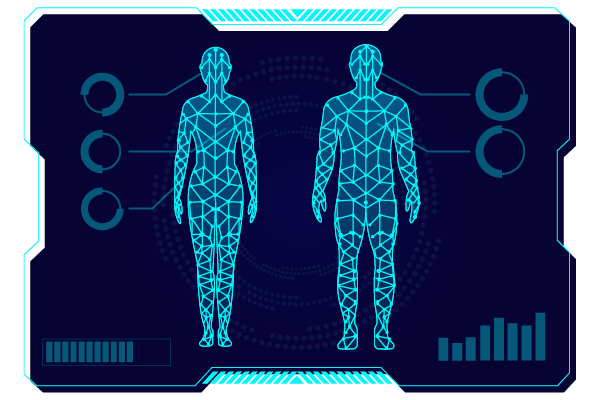The Internet of Bodies (IoB)

What is the Internet of Bodies?
When the Internet of Things (IoT) links with your body, the Internet of Bodies (IoB) is formed. In other words, the IoB is an extension of the IoT that connects the human body to a network via devices ingested, implanted, or otherwise attached to the body. Once the link is established, data may be shared, and the body and gadget can be remotely monitored and controlled.
The Internet of Bodies is divided into three generations:
- External body: these are wearable gadgets that can monitor our health.
Bracelets, watches, and smartphone applications that measure steps, heart rate, sleep patterns, and other bodily data comprised the ‘gen I’ of IoB devices. These gadgets work by utilizing sophisticated accelerometers and other sensors capable of converting movement into digital data.
In the last decade, these gadgets have grown commonplace because they provided user-friendly statistics. However, because of the volume of personal data that these devices gather, as well as their security flaws, the possibility of hackers exploiting such data poses a significant security concern.
- Internal body: these are implanted within our bodies to monitor or regulate various elements of our health.
Digital pills are one of the ‘gen II’ of IoB devices. The sensors implanted in the digital tablets record the medication that was taken. The pill’s sensor delivers a message to a wearable patch, which transfers the data to a mobile app, allowing patients to follow their medicine intake on their cellphones.
- Body embedded: these combine technology with the human body and have a real-time link to a remote machine.
The Brain Computer Interface is part of ‘gen III’ of IoB devices in development. In a BCI application, a person’s brain is combined with an external device for real-time monitoring and control. The ultimate goal is to help persons with disabilities restore function by employing brain signals instead of traditional neuromuscular pathways.
Challenges
- Data security is a big problem. IoB gadgets can follow, record, and store users’ locations, physiological functions, and what they see, hear, and even think. Many concerns about who gets access to the data collected by IoB devices and for what purpose remain unanswered. A cochlear implant, for example, can restore hearing while also recording all sounds in a person’s environment. -creepy-
- IoB devices may be subject to the same cybersecurity issues as IoT devices or any other cloud-based technology. The stakes are especially high given the nature of IoB devices and the data they collect. Hackers may be able to take control of implanted medical devices, causing severe harm or even death. Any IoB-collected data may reveal sensitive information, raising national security issues.
- Problems about data privacy and cybersecurity generate ethical concerns for people whose data has been hacked. Moreover, because the IoB is still in its early stages, basic concerns such as whether individuals have ownership of their personal data or the ability to opt-out of data gathering remain unanswered.
Sources:
Diwan Parag, Beyond Wearable Devices: Internet of Bodies (IoB), https://medium.com/geekculture/beyond-wearable-devices-internet-of-bodies-iob-b49319635dc0
Gardner Maria, The Internet of Bodies Will Change Everything, for Better or Worse, https://www.rand.org/blog/articles/2020/10/the-internet-of-bodies-will-change-everything-for-better-or-worse.html
Marr Bernard, What Is The Internet Of Bodies? And How Is It Changing Our World?, https://www.forbes.com/sites/bernardmarr/2019/12/06/what-is-the-internet-of-bodies-and-how-is-it-changing-our-world/?sh=77b0a2c768b7
World Economic Forum, Shaping the Future of the Internet of Bodies: New challenges of technology governance, http://www3.weforum.org/docs/WEF_IoB_briefing_paper_2020.pdf
